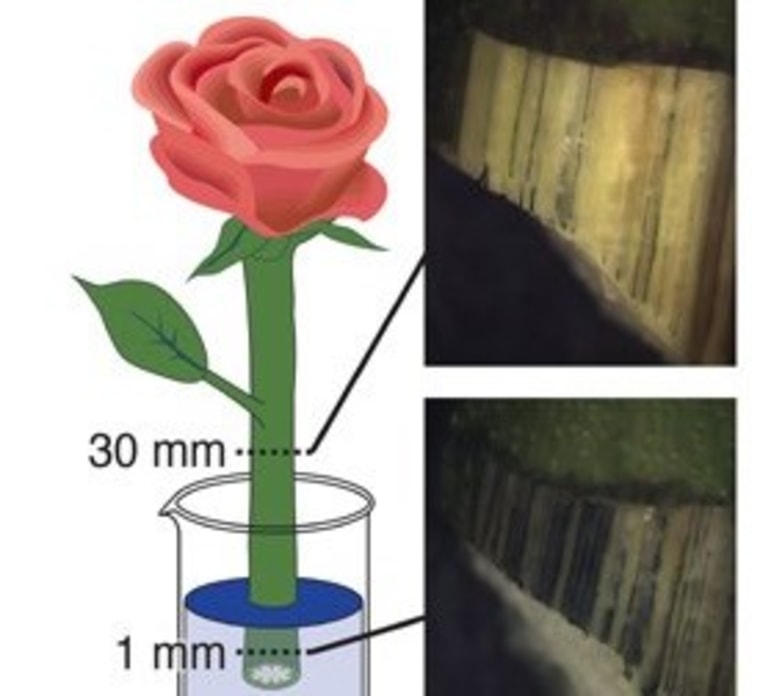Inside most plants is a complex network of cells and pathways that pass water, nutrients and information from the roots to the leaves and everywhere in-between. Eager to take advantage of this "vascular circuitry," researchers at Linköping University in Sweden managed to get the plant to essentially grow conductive wires inside itself that could one day provide a communication or power system for electronics.
Related: Cyborgs Among Us: Human 'Biohackers' Embed Chips In Their Bodies
The team let a cut rose sit in a solution of water and a special conductive polymer called poly(3,4-ethylenedioxythiophene) — PEDOT for short. Over the next 48 hours, the plant took up the water naturally, and the polymers with it, against which the plant's defense mechanism reacted. The PEDOT was fixed in place as it spread, forming long chains of conductive molecules — wires built right into the plant.

These wires could carry information or power, doing for embedded devices and sensors what the plant's pathways already do with its own resources. The resulting "e-plant" might even be able to display that data on its leaves, as the researchers also demonstrate. By suffusing the leaf with PEDOT and using voltage to manipulate the position of the polymers relative to the leaf's surface, they created a very slow, very crude, but functional monochromatic screen.
You probably won't be picking up any of these cyborg plants at the store, but this research could prove very helpful in the agriculture world — imagine a tree with leaves that tell you the nitrogen or water level of the soil.
The researchers' findings are documented in the open-access journal Science Advances.

